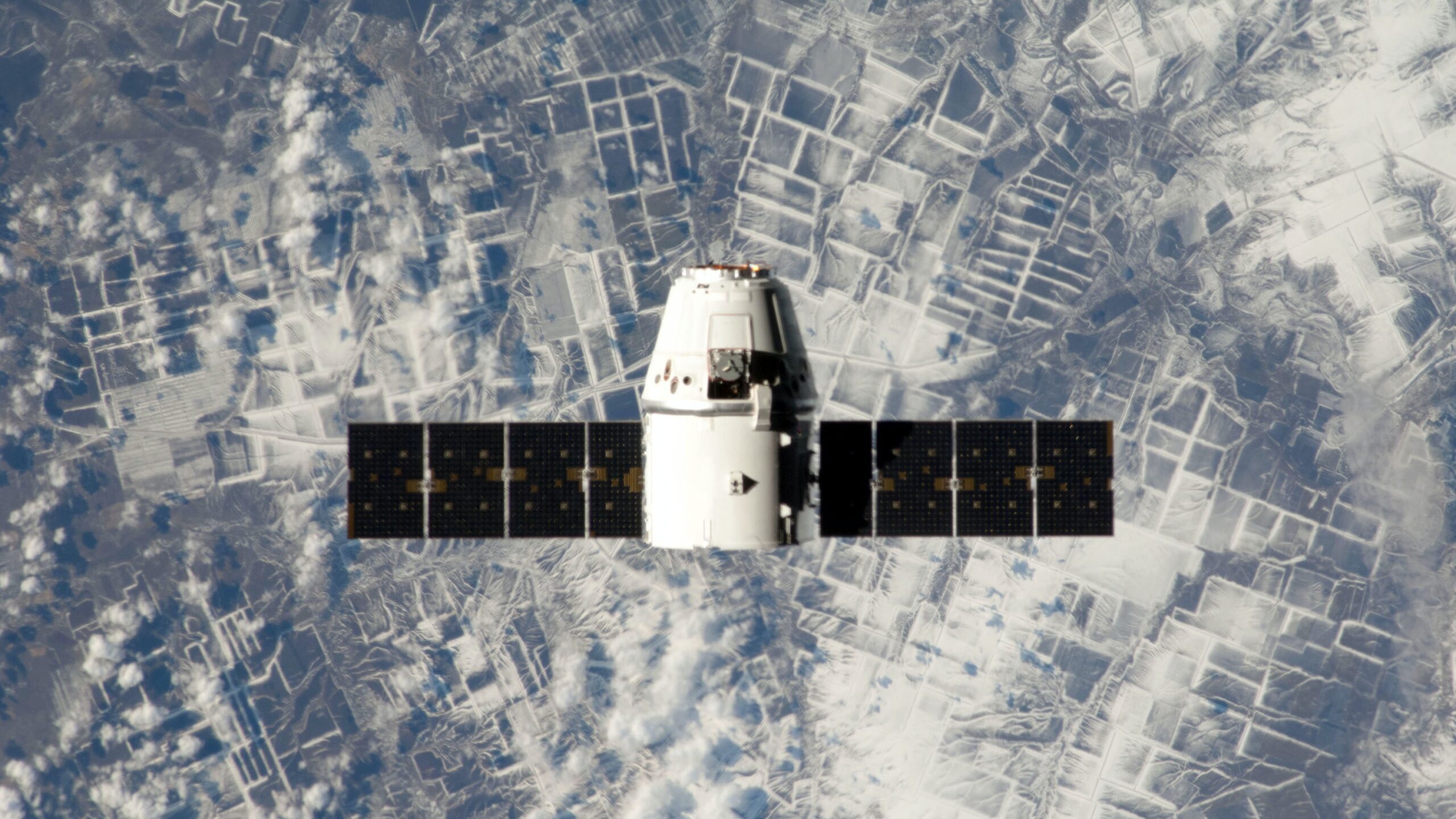
Rendering of a satellite in orbit. (Space X via Pexels)
As shown in a recent Breaking Defense exclusive, nation-states are having tense run-ins in space with regularity. But what happens if a rival takes things a step further to knock an American satellite out of orbit? In the op-ed below, Charles Beames, executive chairman of York Space Systems, argues the best way to protect US interests in space is to have infrastructure ready to replace downed satellites, and fast.
A month before Congress created the US Space Force in 2019, Russia launched an unusual satellite dubbed Cosmos 2542. Though the launch was seemingly routine, nested inside of it like a Russian matryoshka was a second satellite dubbed Cosmos 2543, which maneuvered in close proximity to satellite USA-245, a classified national imaging asset operated by the US National Reconnaissance Office (NRO).
To this day, neither the capabilities nor the intent of this Russian satellite have been made public, but according to Gen. Raymond, the head of Space Force, its deployment alone points to a massive weakness in our space defense infrastructure. Then and now, our national space assets are at risk, putting freedom of access in space at risk as well.
The Russian satellite could have taken out the American one, a poke in the eye of America’s orbital imagery, leaving US intelligence at least partly blind. While that threat is very real, it’s worse that American military currently lacks the one thing it would need most in that event: the ability to quickly replace the asset.
EXCLUSIVE: US, China, Russia test new space war tactics
If America requires an operationally relevant Space Force to deter or immediately respond to attacks, it must acquire and train today with a rapid response inventory and infrastructure.
[Editor’s Note: The author isn’t the only one concerned about rapidly procuring items through the Space Force. Almost 20% of overall respondents to the recent Breaking Defense Space Survey said they believe that the Space Force is not effective “at all” at improving space acquisition. Still, there is a major split between views of DoD and industry: Just 4% of DoD respondents said Space Force hasn’t helped, while 23% of industry respondents held that view.]
Each of our military services maintains a ready inventory of the gear necessary to respond quickly to national crises. As part of the 10 US Code to equip for operations, everything from bullets and rifles to drones, airplanes and even nuclear weapons are part of the planning and inventory process.
Yet 14 years since China shot down its own satellite and two years after the standup of the Space Force, we’re still stuck in last century strategic thinking for national security in space, repurposing a counter-Soviet strategy to confront a completely different enemy with an entirely different ambitions.
EXCLUSIVE: Amid national security concerns, US slaps overhead time limits on satellites
A rapid response space capability must be an integral component of the president’s response options to not only deter an adversary, but also to avoid repeating the humiliation of revealed impotence in the face of a threat. Because when our enemies eventually attack our satellites, only a ready inventory of quick reaction satellites and agile launchers would enable us to respond with a counterpunch and reconstitute at least a partial capability within a day. Today, we could respond in about three years best-case, which provides no deterrent at all.
Ironically, the systems necessary to assemble this capability are not available from the traditional defense industry but do exist in the commercial sector. For over 15 years, America’s next generation of leading space companies have secured billions in private capital to develop these systems and exploit the new economic frontier. Having successfully navigated this burgeoning market, these companies together could enable a rapid response capability — as soon as today.
If Russia or China decided to render some of our hundreds of orbiting satellites inoperable, we could reconstitute within 24 hours by launching stored, low-cost, commercial, near-equivalents to replace them, but only if we inventory a few low-cost systems, like small commercial rockets and satellites.
RELATED: Cyber concerns, classification disagreements lead Space Survey results
With advanced close proximity orbital maneuvering capabilities available commercially off the shelf (COTS), we could maneuver right next to a threatening satellite like COSMOS 2543 and visibly intimidate them in real time. Similar responses by the USAF have proven very effective for decades when threatened by Russia or China. Today, our F-22 fighters provide a friendly escort to Russian bombers that enter national airspace off the Alaskan coast.
When quiet diplomacy yields nothing but a torrent of denial, pictures taken by a close proximity satellite with counterspace capabilities could further intimidate aggressors on the world stage. If we secure that deterrent by baking in an active inventory with the requisite training and tactics of our operators, Russia and China would think twice before carrying out such actions again.
RELATED: Has Space Force Helped Improve Space Acquisition? Survey Respondents Split
The tragedy is that the Space Force has neither this inventory today nor the budget plans to acquire it in the foreseeable future, even though the necessary components are commercially available right now. Today, a handful of commercial companies have quick response launch systems capable of delivering a satellite into any orbit at any time in less than 24 hours, replacing a destroyed satellite or augmenting during a time of provocation.
Virgin Orbit, for example, has two successful launches already under its belt, with other launch companies like ABL, Astra, and Firefly hot on their heels. Additionally, multiple commercial ground system companies stand ready today to connect these satellites to earth-bound operators, while data exploitation software from Silicon Valley can be easily adapted for unique military purposes.
In parallel, US companies are producing hundreds of low-cost commercial small satellites every year for customers around the world. In fact, according to a recent interview I conducted with Space Development Agency Director Derek Tournear, the results of the SDA’s most recent competitive procurement resulted in 10 contractors bidding and five deemed qualified or “in the competitive range” to deliver operational low-cost satellites on orbit within two years as it builds the National Defense Space Architecture.
For less than 1% of its budget, the Space Force can pivot to secure capabilities like these today to assure effective response options for tomorrow. We can only hope that the newest generation of space generals has the courage to act in anticipation of the conflict that lies ahead, and not follow the footsteps of their predecessors by preparing for the last war.
Space Force’s biggest vulnerability has a surprisingly straightforward solution. What’s desperately needed to edge ahead in inventory and infrastructure lies within our own commercial industry.
We no longer have the luxury of time to defer with yet another think tank study or analysis of alternatives. With two small, nested satellites, Russia revealed to both our allies and our enemies a humiliating space vulnerability – one that we can either address now or pay history-altering consequences in the decades to come.
Charles Beames is the executive chairman of York Space Systems, a former senior Department of Defense official and the co-founder of the SmallSat Alliance, an industry group representing 50 next-generation space companies. He is on Twitter at @ChuckBeames.






















